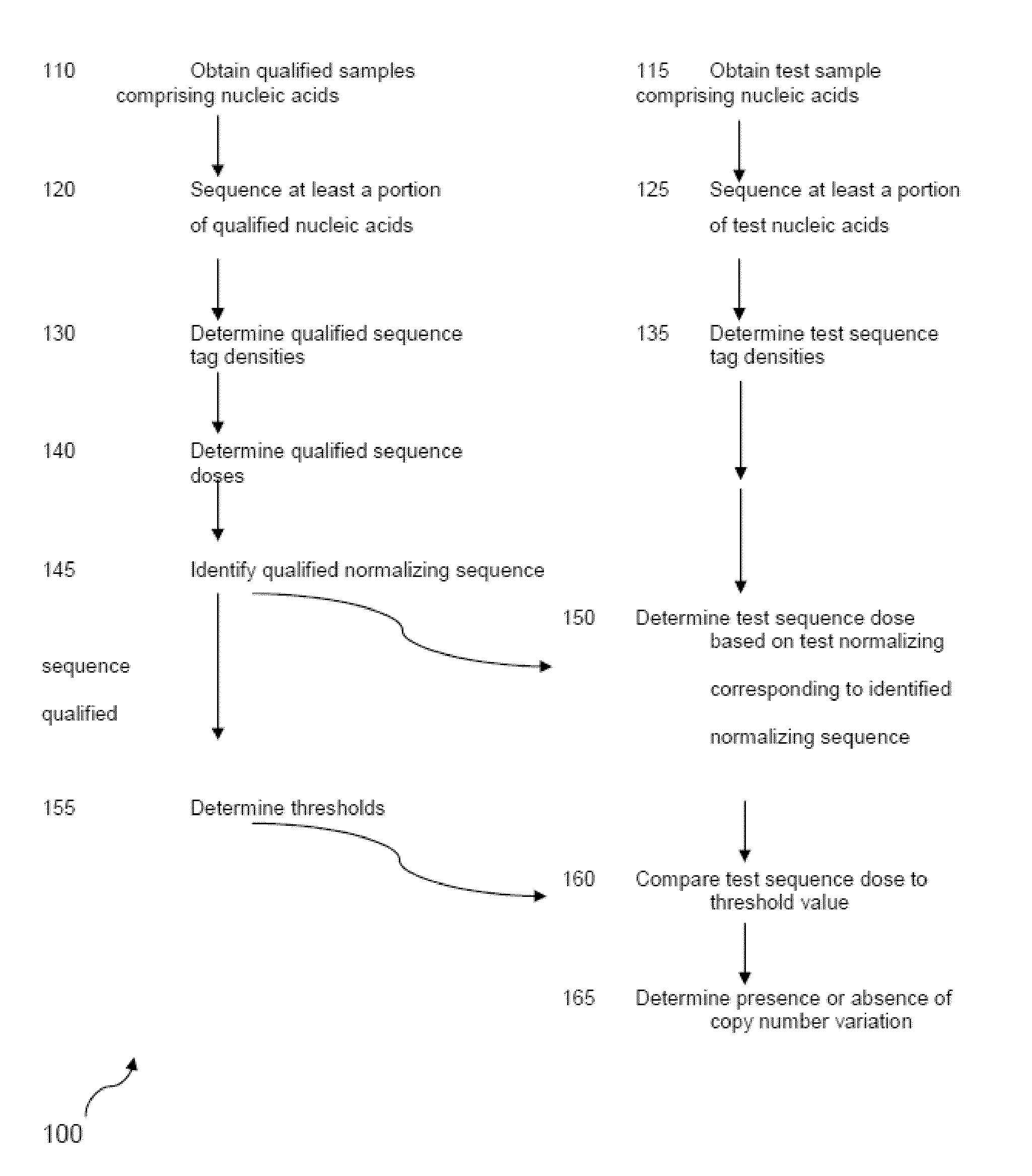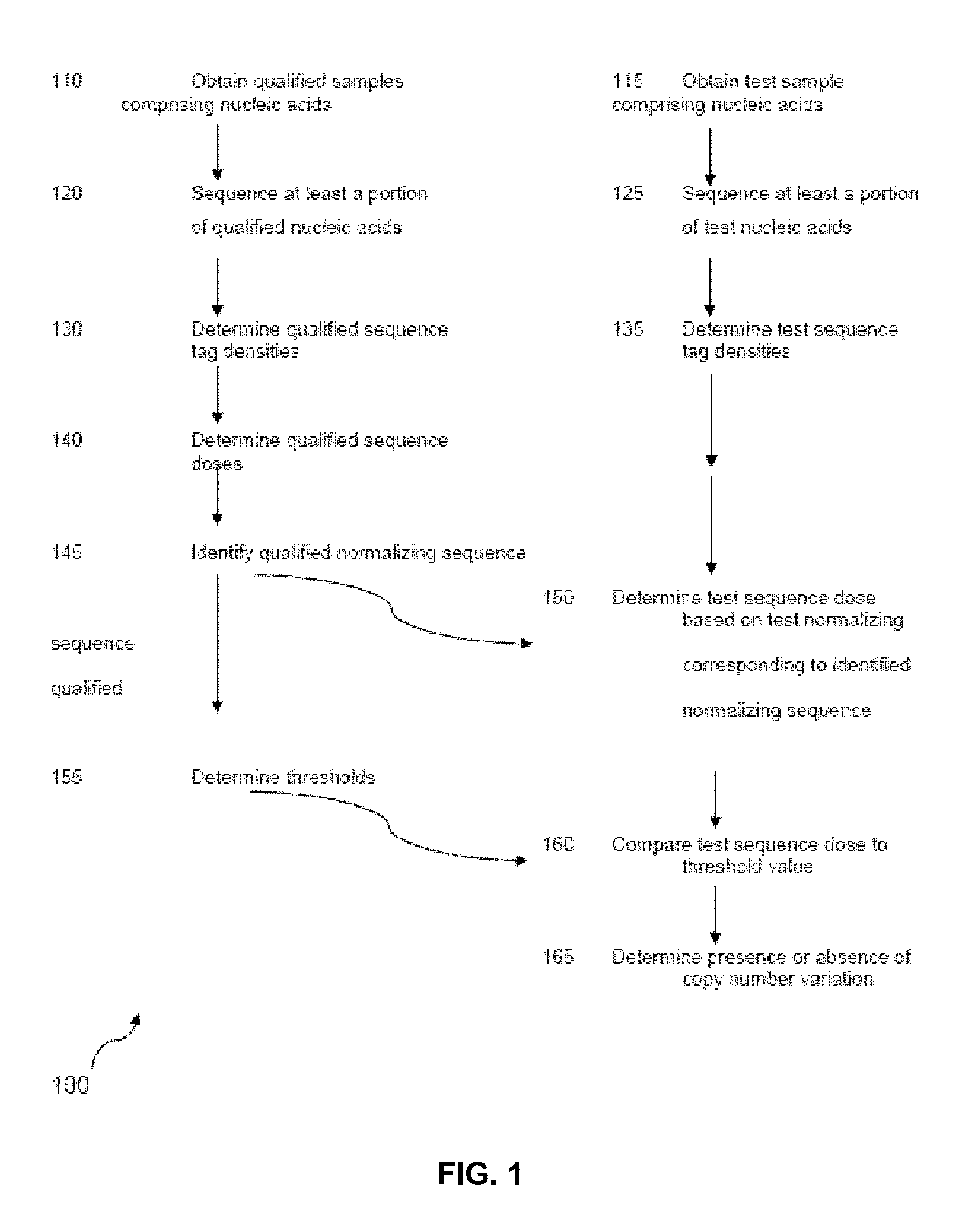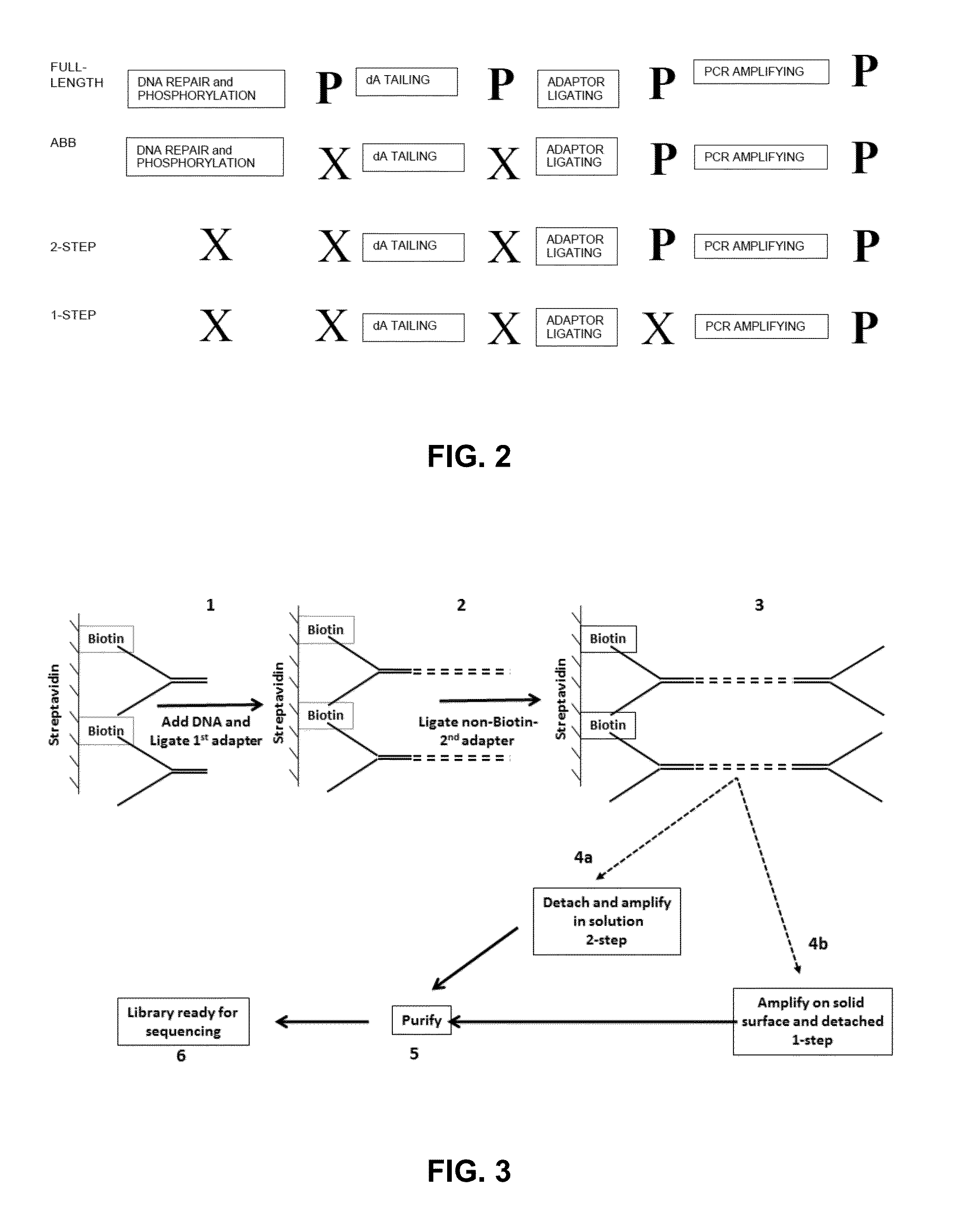Detecting and classifying copy number variation
a technology of copy number variation and detection method, applied in the field of human medical research, can solve the problems of weak bias or other defect in the procedure, the most common cause of gene dosage or gene disruption, and the inability to detect and classify copy number variation
- Summary
- Abstract
- Description
- Claims
- Application Information
AI Technical Summary
Benefits of technology
Problems solved by technology
Method used
Image
Examples
example 1
Sample Processing and cfDNA Extraction
[0742]Peripheral blood samples were collected from pregnant women in their first or second trimester of pregnancy and who were deemed at risk for fetal aneuploidy. Informed consent was obtained from each participant prior to the blood draw. Blood was collected before amniocentesis or chorionic villus sampling. Karyotype analysis was performed using the chorionic villus or amniocentesis samples to confirm fetal karyotype.
[0743]Peripheral blood drawn from each subject was collected in ACD tubes. One tube of blood sample (approximately 6-9 mL / tube) was transferred into one 15-mL low speed centrifuge tube. Blood was centrifuged at 2640 rpm, 4° C. for 10 min using Beckman Allegra 6 R centrifuge and rotor model GA 3.8.
[0744]For cell-free plasma extraction, the upper plasma layer was transferred to a 15-ml high speed centrifuge tube and centrifuged at 16000×g, 4° C. for 10 min using Beckman Coulter Avanti J-E centrifuge, and JA-14 rotor. The two centri...
example 2
Preparation and Sequencing of Primary and Enriched Sequencing Libraries
A. Preparation of Sequencing Libraries—Abbreviated Protocol (ABB)
[0746]All sequencing libraries i.e. primary and enriched libraries, were prepared from approximately 2 ng of purified cfDNA that was extracted from maternal plasma. Library preparation was performed using reagents of the NEBNext™ DNA Sample Prep DNA Reagent Set 1 (Part No. E6000L; New England Biolabs, Ipswich, Mass.), for Illumina® as follows. Because cell-free plasma DNA is fragmented in nature, no further fragmentation by nebulization or sonication was done on the plasma DNA samples. The overhangs of approximately 2 ng purified cfDNA fragments contained in 40 μl were converted into phosphorylated blunt ends according to the NEBNext® End Repair Module by incubating in a 1.5 ml microfuge tube the cfDNA with 5 μl 10× phosphorylation buffer, 2 μl deoxynucleotide solution mix (10 mM each dNTP), 1 μl of a 1:5 dilution of DNA Polymerase I, 1 μl T4 DNA Po...
example 3
Preparation of Sequencing Libraries from Unrepaired cfDNA: Adaptor Ligation in Solution
[0754]To determine whether the abbreviated protocol could be further shortened to further expedite sample analysis, sequencing libraries were made from unrepaired cfDNA, and sequenced using the Illumina Genome Analyzer II as previously described.
[0755]cfDNA was prepared from peripheral blood samples as described herein. Blunt-ending and phosphorylation of the 5′-phosphate mandated by the published protocol for the Illumina platform were not performed to provide the unrepaired cfDNA sample.
[0756]Omitting DNA repair or DNA repair and phosphorylation was determined not to affect the quality or the yield of the sequencing library (data not shown).
2-Step in Solution Method for Non-Indexed Unrepaired DNA
[0757]In a first set of experiments, the unrepaired cfDNA was subjected to simultaneous dA tailing and adaptor ligation by combining both Klenow Exo- and T4-DNA ligase in the same reaction mixture as fol...
PUM
| Property | Measurement | Unit |
|---|---|---|
| fluorescence in situ hybridization | aaaaa | aaaaa |
| quantitative fluorescence PCR | aaaaa | aaaaa |
| density | aaaaa | aaaaa |
Abstract
Description
Claims
Application Information
 Login to View More
Login to View More - R&D
- Intellectual Property
- Life Sciences
- Materials
- Tech Scout
- Unparalleled Data Quality
- Higher Quality Content
- 60% Fewer Hallucinations
Browse by: Latest US Patents, China's latest patents, Technical Efficacy Thesaurus, Application Domain, Technology Topic, Popular Technical Reports.
© 2025 PatSnap. All rights reserved.Legal|Privacy policy|Modern Slavery Act Transparency Statement|Sitemap|About US| Contact US: help@patsnap.com



